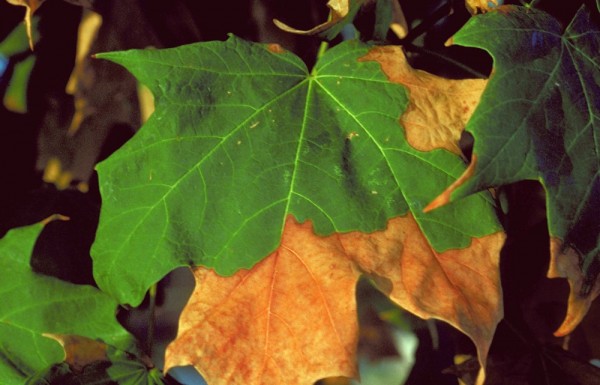Drought stress is a common ailment affecting trees. The first obvious cause is that the roots of the tree are not absorbing enough water. Additionally, in certain situations the roots may also have problems that stop them from properly absorbing the moisture. These root problems can occur with overcrowding or improper paving techniques and may or may not allow the plant to remain alive but stop further growth.
1. Which Types of Trees Handle Drought Well?
Different types of trees are more appropriate for climates experiencing drought and will thrive even in dry conditions. In general, native trees that are adaptable to the climate’s soil are a good selection. When straying outside of native trees, small-leafed varieties like oak and willow will more efficiently use the scarce water supply. Trees that re-colonize like elm and pine are also intelligent choices and can usually survive in a drought.
An extraordinary example of trees that have adapted to their native conditions are the giant coastal redwoods of northern California. California is experiencing it’s fifth year of severe drought. The giant redwoods are evolved to capture the fog in the area and use it as their primary water source during dry months.
The roots of the redwoods capture the fog-drip and disperse it at the surface of the soil. This fog supplies 30-40 percent of the water sustaining the redwood forests.
2. What are Common Symptoms Of Drought Damage?
When observing a tree suffering from drought, the damage to the plant will begin from the top of the plant and work down and from the outside of the trunk working in. Leafs and branches will become wilted.
Some symptoms that can be caused by drought are difficult to address since they can also be caused by disease or insects. These include a thinning tree canopy or leafy sections that appear increasingly yellow or yellowish-green.
3. Drought Damage Symptoms On Leaves
When observing the leaves on a tree you suspect is suffering from drought damage, symptoms will vary between species. A deciduous tree (those that shed their leaves annually) may have leaves that are smaller than normal and appear brown from the outside edges inward. Leaves may curl in or appear misshapen.
Evergreen tree needles will be brown from the tip downward, or they may turn yellow or reddish in color. Leaves may fall from the tree without turning their natural color or remain attached to the tree though brown.
4. Caring for Trees During a Drought
It’s important to remember that even when a tree is experiencing drought, proper care may help it survive until the rainy season. Fruit and nut trees require continuous water into their root zones to produce a substantial harvest. If harvesting is not a particular concern, watering regularly during the early season will keep the trees alive but reduce harvest production.
For ornamental trees that have deep roots, one to three deep irrigations a few weeks apart during the dry months should be sufficient to keep the tree alive. Some tree ring irrigation contraptions allow homeowners to determine the depth water is reaching down into the soil. This allows for proper root irrigation and tree health.
If you’re interested in tree trimming or stump removal try out Valley Tree Managers. They are a full service cactus, tree, and stump removal company who have been around for years!

